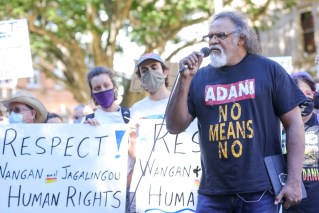How missing Chinese tourists are spelling trouble for economy
The dynamic recovery in Australia’s tourism sector is underway but international tourists and students from China were still missing and this was having a big impact on the sector, universities and was also a drag on the economy, according to ANZ.


Chinese visitors were still missing and creating economic problems
While domestic tourism has been recovering strongly in Queensland and the rest of the nation, international arrivals had been slowed by the inability of airlines to get their planes back in the air and operating effectively.
China has yet to fully reopen its borders and adding to its slow return, ANZ said one third of flights in Australia have been delayed and 40 per cent of travellers had experienced baggage issues in the past year.
“This could prompt some visitors to delay travel until airline serviceability improves,” the ANZ economics team said in a report.
But there had been a “structural shift” in the types of visitors coming to Australia. ANZ said data from Tourism Research Australia showed NZ and India were now the two biggest markets whereas before Covid it was China and NZ.
“Short-term arrivals from China are down more than 90 per cent compared to pre-Covid levels, with the country’s zero Covid policy delaying their return,” ANZ said.
By contrast, visitor numbers from the UK, NZ and Singapore were at 60 per cent to 80 per cent of pre-Covid levels.
Before Covid, Chinese tourists spent $12.2 billion in Australia, about a quarter of the total spend of international tourists. About 1.4 million arrived in 2019. In 2021, as borders closed around the world, that fell to just $76 million.
But while increased visitors from India were offsetting the Chinese gap, ANZ said the travellers from other countries were “not perfect substitutes” for the Chinese.
“They have different preferences, enjoy spending their money on different things and, critically, spend different amounts of money,” ANZ said.
ANZ said a visitor from China would also spend $9300 per trip. Visitors from India spend $4800.
“In terms of spending, the sector needs almost twice as many visitors from India than from China to make the same revenue,” the ANZ economics team said.
ANZ’s economics team said the slow return of Chinese tourists would be a bigger drag on GDP over the next year or so and industries reliant on Chinese students may struggle for some time.
On the upside, the increased number of Indians settling in Australia would mean an increase in the number of their countrymen visiting Australia.
“It will take some time for Australia’s tourism and education exports to recover, given the changed composition and spending behaviour of students. Australia will need more overseas students to meet previous revenue levels if Chinese students continue to make up a smaller share,” ANZ said.
“We expect that China’s zero Covid policy will remain in place in some form over the short term. This will be a headwind for services export growth with net exports of services now set to be a slightly larger drag on growth over the next couple of years.
“The future of the broader Australia-China relationship will also influence the return of tourists.”












